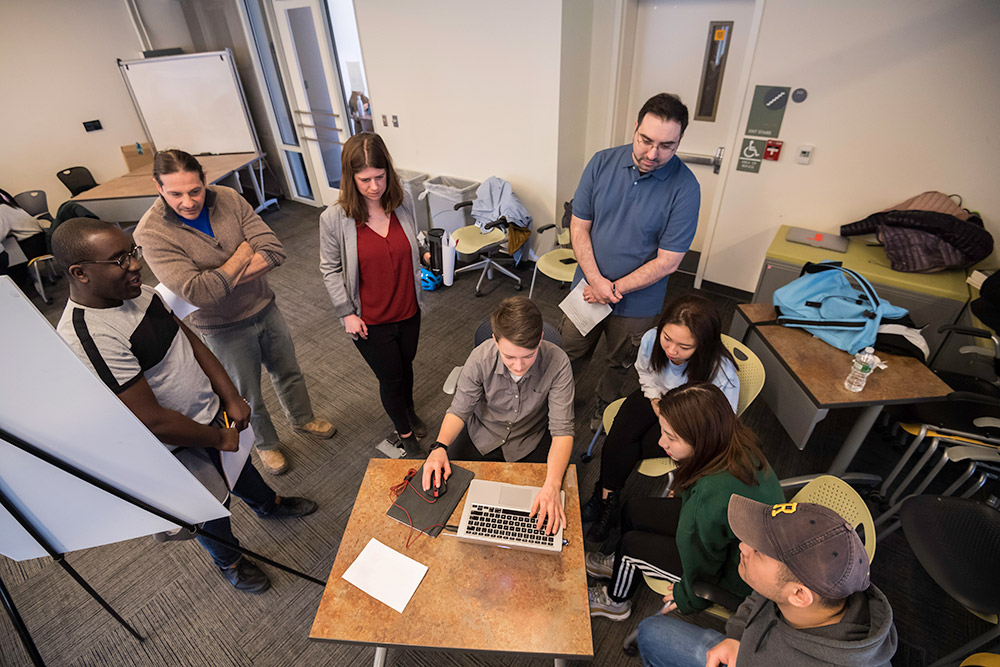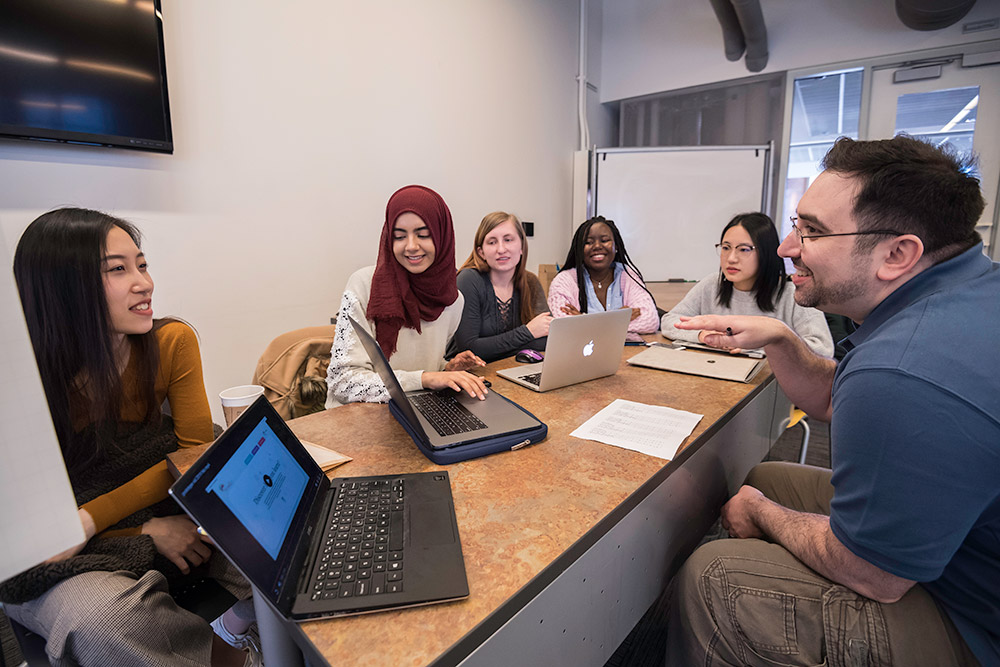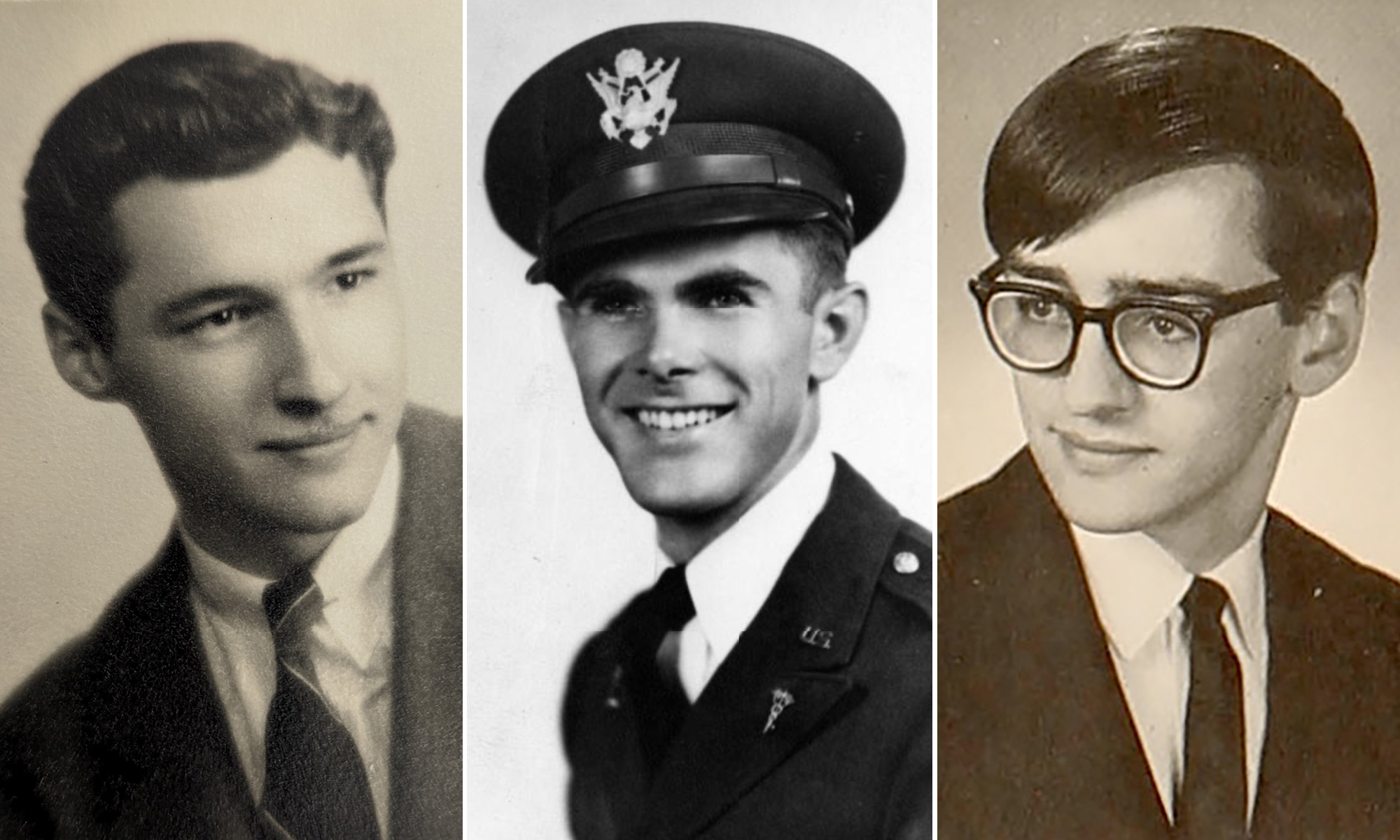Making Their Mark is a Newscenter series of profiles celebrating members of Rochester’s graduating class of 2019.
As the seniors of the Digital Media Studies program go out into the workforce and some on to graduate school, they can say that they’ve already put into practice what they’ve learned.
From virtual reality projects that aim to foster empathy for the deaf and hard of hearing community to a video game that supports English language learners, five teams of students approached “real-world” problems merging technology and humanities through the use of digital media.
“Most of our team members had problems with reading and comprehension,” says Lava Hong ’19, who serves as project lead, researcher, and audio engineer for the team, “Cheshire.”
“I tended to read the Chinese version of a book instead of looking at the English text,” says Xinge Zhao ’19—game designer, tester, and animator for the team—recalling a particularly challenging Shakespeare course. “I was reluctant,” she says. Zhao will graduate with a double major in English and digital media studies.
“It’s because of vocabulary, grammar, language structure, and context,” Hong says. “We thought these were the elements that we could put into our game to help people better understand literature and make them interested in reading. Hong will graduate this spring with majors in both digital media studies and psychology.
While each student brings unique skills and knowledge to the group, they all have a love of playing video games. The team also includes Lu Nguyen ’19, who serves as the game programmer and developer; Famous Clark ’19, a game programmer, visual designer, and researcher; and Zhao, who served as a game designer, tester, and animator.

The interactive video game design is based on the gothic short story “Tall Tale Heart,” by Edgar Allan Poe. It’s built to force a gamer to text the answers instead of using multiple choice, because “people can guess,” says Hong.
Clark, a computer science and digital media studies double major, says the game is coded, so that if you put in correct keywords, the game will assume you’re correct. “It’s built to be intuitive for readers,” he says. If you type in something similar to the word–for example typing an “i” instead of “e” for the word “eyelid,” the game continues to move the player forward in the story.
The capstone seminar course is taught by Stephanie Ashenfelder, interim director of the Digital Media Studies Program and studio arts program manager in the Department of Art and Art History.
The virtual reality project “clEAR” was the brainchild of seniors Kelly Thornton ’19, Zhewen Guan ’19, AJ Brown ’19, and David Backer ’19. Using a 360 camera, the team incorporated Oculus technology to create an interactive storyline for users to go through that would put them in real life scenarios for the deaf and hard of hearing. Their goal is to put people in the shoes of a person who is hard of hearing to gain a new perspective.
“We’re a team of picky eaters,” says Carolyn Zelicoff ’19, team lead and UX/UI designer for the team project called “Curb.” Also on the team is Michael Keane ’19, who serves as visual designer and creative leader; Conley Ernst ’19, who serves as technical lead; and Michelle Bushoy ’19 who oversees marketing. Curb is a food truck app unlike any on the current market—one with a user interface for both the user and the food trucks. Food trucks have the option to toggle their location on or off as well as change their daily menu. Users can filter trucks for dietary needs and restrictions, “whether gluten free, have a nut allergy, or pescetarian,” says Zelicoff.

“PersonalizED” is a web application using Java that allows adolescent users to identify their learning strengths and help them boost their learning success with tips and techniques. The team consisted of Tallis Polashenski ’19, Mojin Yu ’19, Sarah Ogunji ’19, Verona Shuwei Wang ’19, and Amina Shareef ’19.
Gerardo Torres Davila ’19 created the website called R2 that fosters collaboration and takes advantage of a free intercollegiate registration for students in the creative and visual fields at the University of Rochester and Rochester Institute of Technology.
“The diversity of these projects speak to the interests of our students and the interdisciplinary nature of the major,” says Ashenfelder. “These projects are ambitious and thought provoking.”



